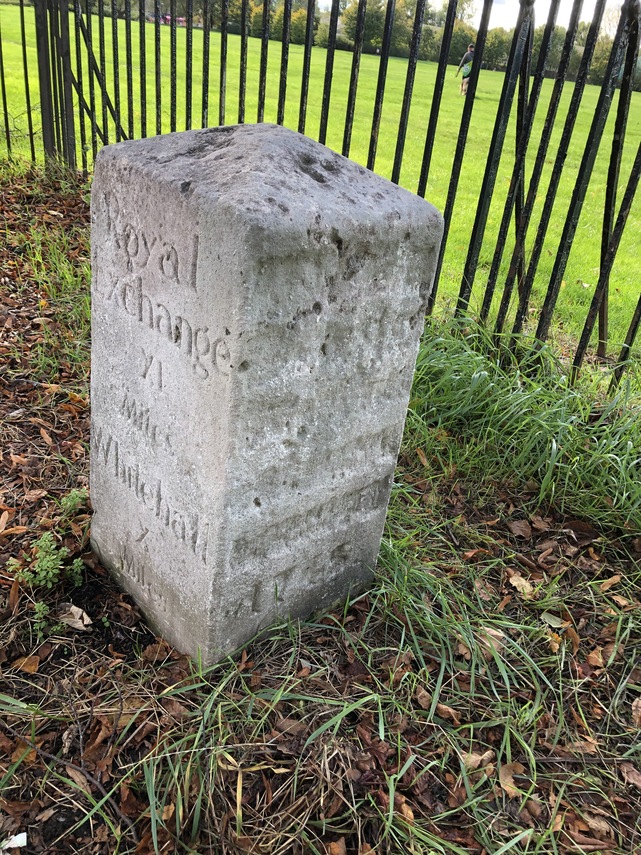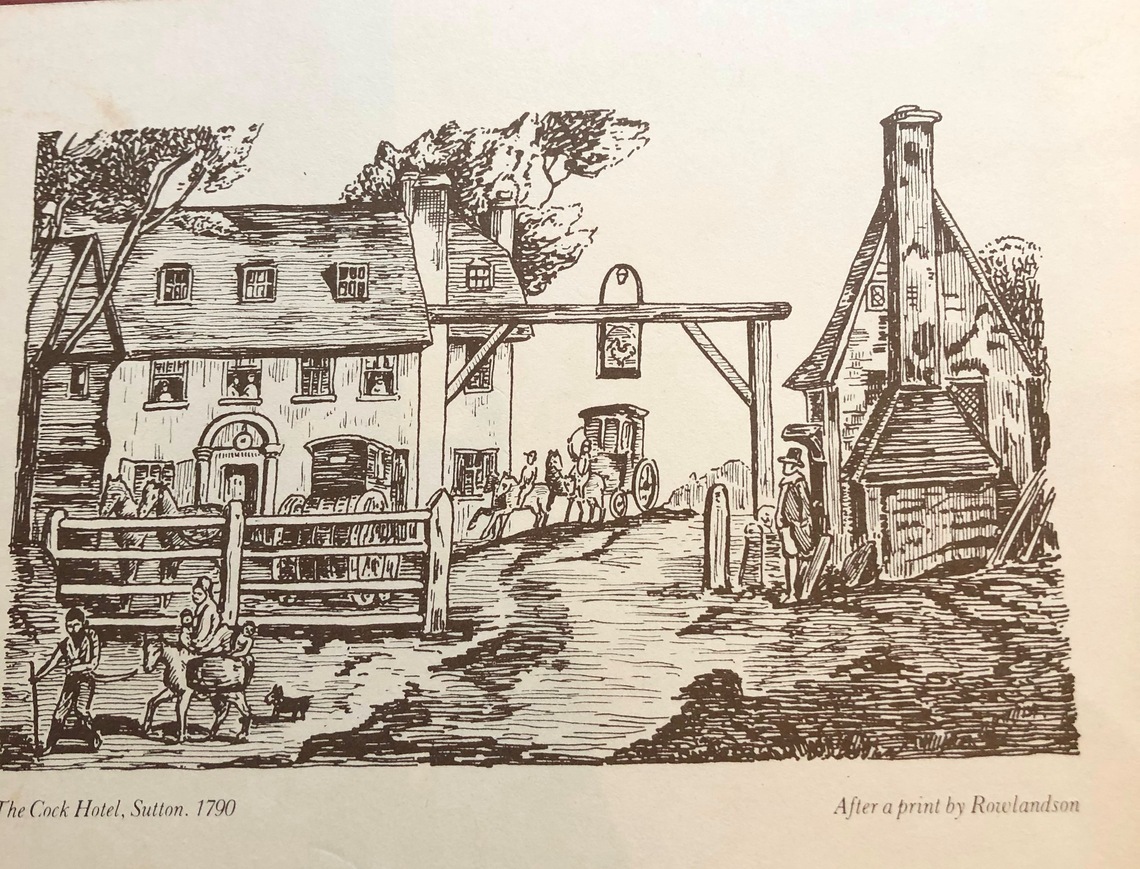The Rose Hill Milestone 1745
We are lucky indeed to have a Grade II listed monument in Rose Hill Park West – 
The Friends are taking care of the Rose Hill milestone. We have cleaned it, under instruction from the Milestone Society, and have secured funds from the Neighbourhood Fund to cobble pave around it, paint the railings and put up an information display board.
Three of the eight stones from this set still stand in Sutton at precise one mile intervals – Rose Hill, Sutton High Street and Brighton Road. You will notice that they are defaced on the sides and this is because they have been re-carved several times over the years as the London destinations changed.
It is thought that the stones originally showed The Standard at Cornhill as the destination. This was a water pump at a junction of roads which was used for centuries as the measuring point from London. It seems that the stones were re-carved after Westminster Bridge opened in 1750 allowing traffic a more direct route to Whitehall and the Royal Exchange, as now shown on the Rose Hill and High Street stones.
In 1755 the Turnpike Trusts were established, tolls were collected, the roads widened and hardened with gravel and flint, and the stage coach era began. The Sutton route was extended to Brighton. Then a small fishing village called Brighthelmstone, it became popular as a sea bathing resort after Dr Richard Russell advocated the health benefits of sea air and bathing.
Sutton, just 12 miles from London, was the first staging point for the coaches. An account from 1801 describes the journey from Blossoms Inn in Lawrence Lane at 7am, crossing the river at London Bridge and proceeding via Clapham, Figges Marsh and Mitcham arriving at the Cock Inn at the top of Sutton for breakfast and a change of horses. Continuing their journey, passengers partook of a glass of elderberry wine at the Tangier Inn in Banstead, made a stop for lunch at the White Hart or the Swan in Reigate, had dinner at Stapleford Common, a liquor at Handcross, tea at Patcham, and arrived in Brighthelmstone at 7pm.
The Cock Hotel Sutton 1790
View looking south to the Brighton Road, then called Sutton Lane
The Cock Inn Sutton (print by Thomas Rowlandson)
In the 19th century, the Victorians replaced the Roman numerals with modern numbers. A postcard from 1910 shows the High Street milestone as ‘Whitehall 11½ miles’.
In June 1940 the milestones were removed following fears of an enemy invasion. They were restored and replaced after the War. Council minutes refer to five stones in the Borough, the two others being one in Cheam Road installed in 1755 when a turnpike road was made going east-west between Carshalton and Ewell, crossing the north-south Brighton Road at the Cock Inn, and the other in London Road, an alternative route from London via Morden along the old Roman road.
In the interests of history, Sutton Council chose to re-inscribe the stones after the War with the original Roman numerals. The Brighton Road stone was restored by a private donation by Mr Ely of Ely’s stores in Wimbledon and he chose to re-inscribe it with its first destination of The Standard at Cornhill. A map of 1888 shows that the stone then showed The Standard and Westminster Bridge as the destinations, but the right flank is now defaced.
The Reigate Turnpike Trust ceased operation in 1881, but miraculously, the early 19th century tollhouse that once stood at Rose Hill has survived. Originally a one-storey building, it was moved on rollers for 1½ miles to Wrythe Green where it exists today as a private home named Woodcote House, a Grade 2 listed building.

